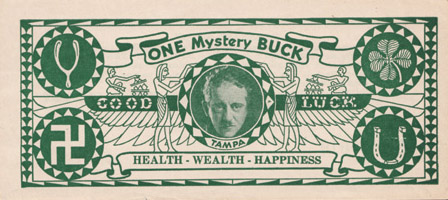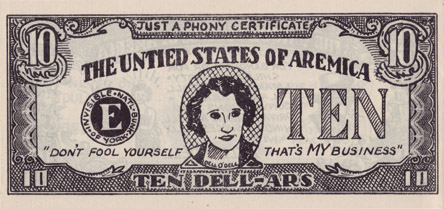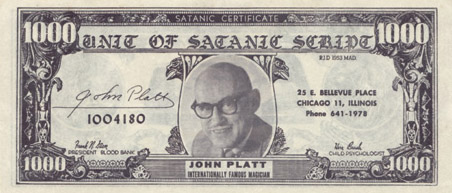Currencies of Wonder
Magicians make money
Tim Reed
Magicians have traditionally been fiercely competitive, sometimes spending small fortunes on publicity material to distinguish themselves from their rivals. Whether in the form of souvenir photographs, posters, or self-promoting “pitchbooks,” magicians have always been in the business of making money. And what better way to set yourself apart from others than to print your own money, providing a self-mocking sense of personal wealth and superiority? One of the earliest examples, printed in 1855 by magician Signor Alfred Bosco, was a fifty-pound note on which appeared the text, “Bank of the Great Wizard of the World … Temple of Natural Magic and Ventriloquism.” Bosco died in poverty. In the modern period, with the United States dominating the economies both within and outside the magic world, the American dollar bill has emerged as the standard design for magicians’ publicity currency.





Tim Reed is a collector of magic memorabilia, including the world’s largest collection of material relating to the 1980s British television magician, Paul Daniels. He is assistant editor of The Magic Circular, the internal publication of The Magic Circle, London.
Spotted an error? Email us at corrections at cabinetmagazine dot org.
If you’ve enjoyed the free articles that we offer on our site, please consider subscribing to our nonprofit magazine. You get twelve online issues and unlimited access to all our archives.